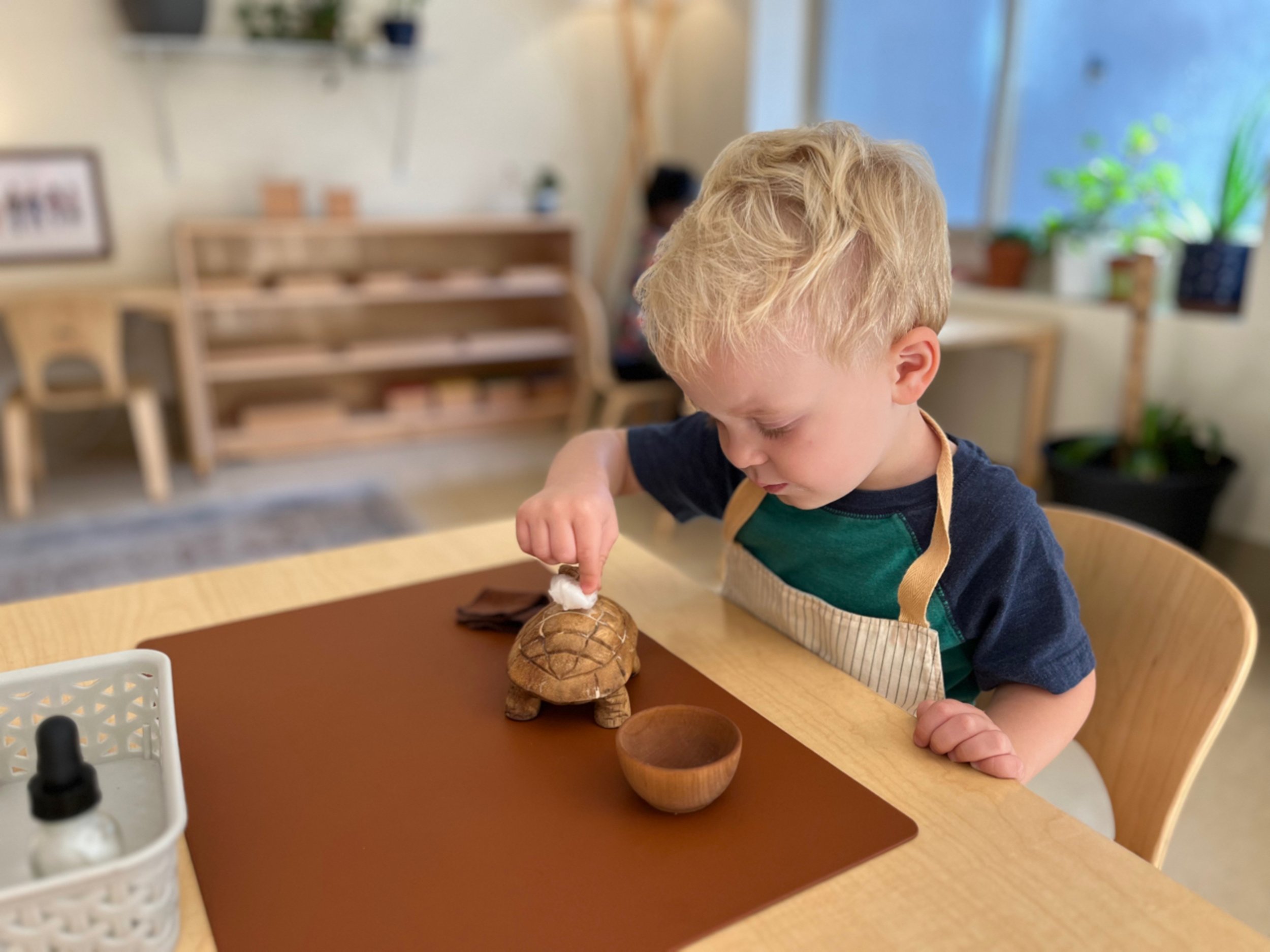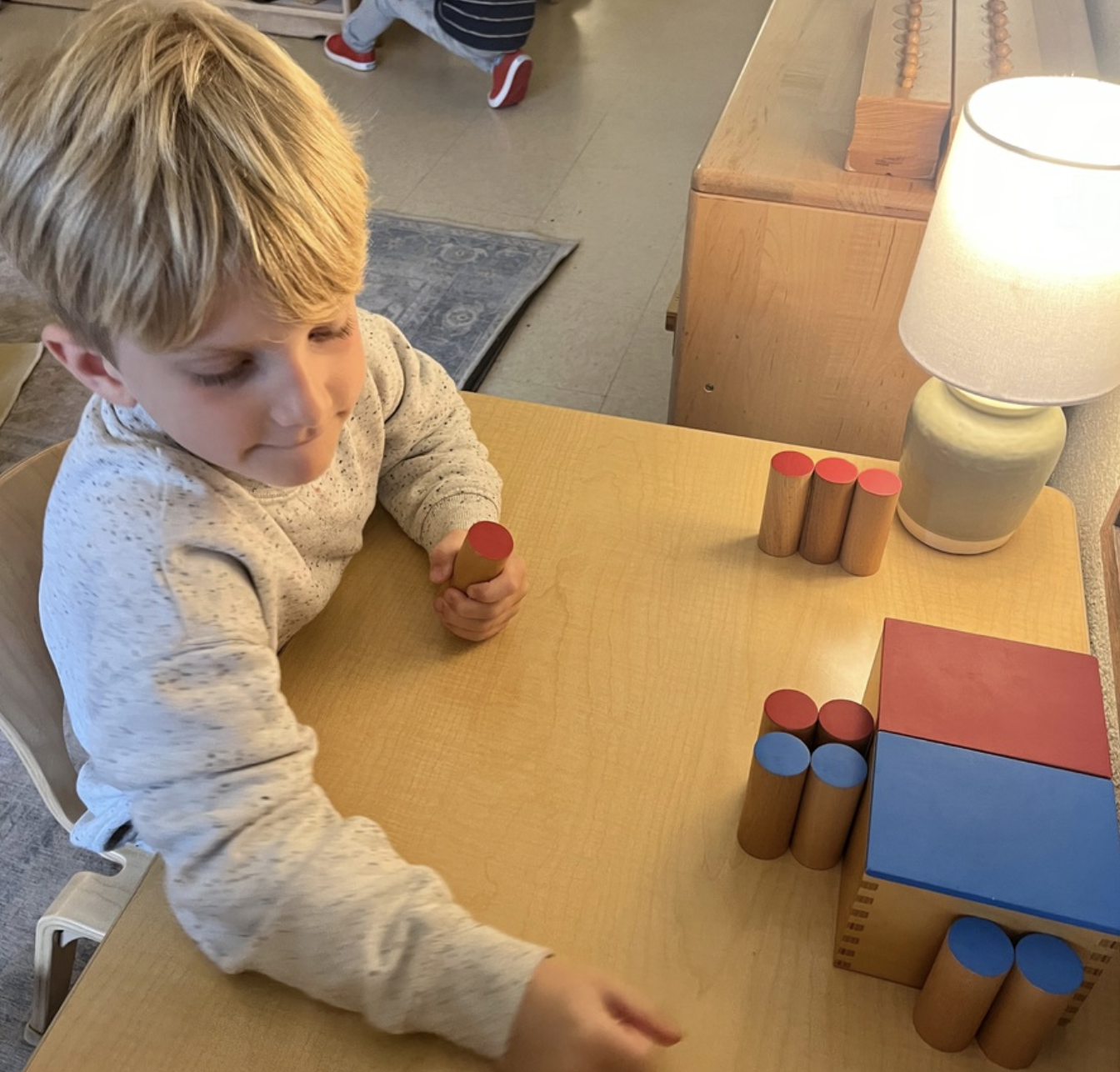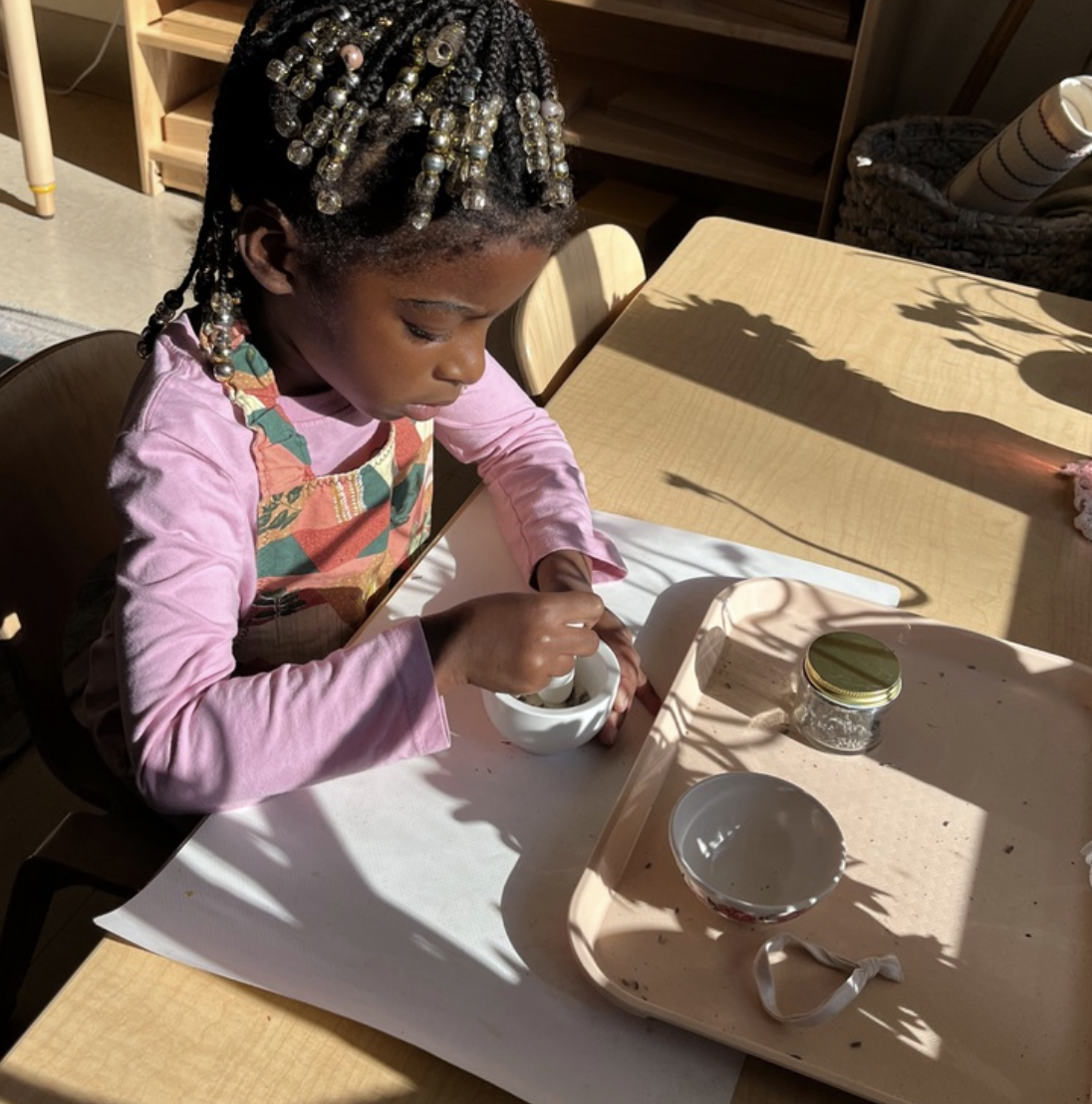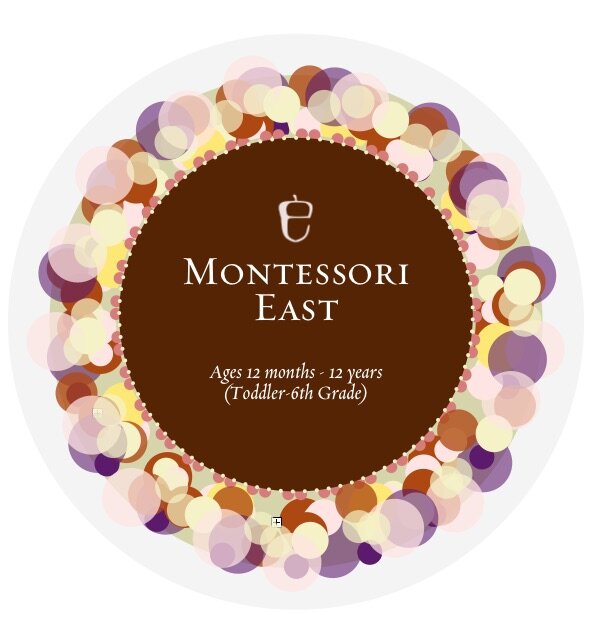Primary: Ages 3-6
Montessori East offers each child an individualized education; wherever your child is in their comprehension and interest is where we start each day. Every child at Montessori East learns at their own pace and enjoys freedom of choice in a calm, friendly atmosphere.
Our Montessori classrooms are bright, beautiful spaces which are prepared in such a way that children work freely and independently after the teacher (known as a guide in Montessori classrooms) gives them a formal lesson. This is possible because our specialized Montessori materials are designed to keep teaching the child once the guide has walked away. The child is discovering information on their own through play and exploration as opposed to being "taught and trained" by an adult. Fatigue-free learning and self confidence naturally occur through this beautiful process of discovery.
The mixed aged grouping in our classrooms encourages children to teach and learn from each other. The guide’s role, in addition to giving lessons, is one of careful observer as the children progress at their own pace. Montessori East's specially prepared environment is designed to draw a child toward a progression of skills. The uninterrupted "work cycle" also allows the child to focus on a task for as long as they would like and master each skill.
Our guides are formally trained and certified in high quality Montessori training programs through MACTE accredited training centers.
Want to learn more about our Primary program, submit an inquiry now.

There are four major areas to a Montessori primary classroom environment. Each area offers the child enjoyable and specialized materials designed to offer an introduction and a path to mastery of a given concept.
Practical Life
Practical life is the area of a Montessori classroom where a child learns the fundamentals of humanity. How to care for one’s self, one’s environment, one’s neighbors, and how to be creative. We offer delightful, organized, child sized materials that draw the early childhood eye to let the child develop these characteristics in themselves. Examples include but are not limited to: food preparation, polishing, flower arranging, sewing and art.
Sensorial
Sensorial is the area of the classroom where children have the opportunity to categorize the world around them and refine their senses. There are materialized abstractions for almost every way we take in the world including but not limited to: size, weight, color and texture. Furthermore, this area includes materials which offer the child opportunities for design and to develop mathematical skills. There are also cultural materials as well in the form of political maps materialized as puzzles.
Mathematics
Maths is the area of the classroom where the child is introduced to the concept of quantity and symbol. We begin with simple whole numbers 0-10 and continue down several paths including place value and operations within, linear counting to 1000 (which exposes the child to square and cube root) and math facts.
Language
Language is the broadest area of the classroom where the child experiences learning and community. It is through language that the child classifies their English and the ability to exist and function in a society of little children. We being with vocabulary, simply giving names to the objects and images in a child’s experience then proceed to phonemic awareness. We use phonics to show the child writing and reading, later introducing print. We strongly emphasize expressive writing. In addition to multicultural and interdisciplinary vocabulary, the child is exposed to grammar, word study and sentence analysis in the latter stages of the Primary experience.





